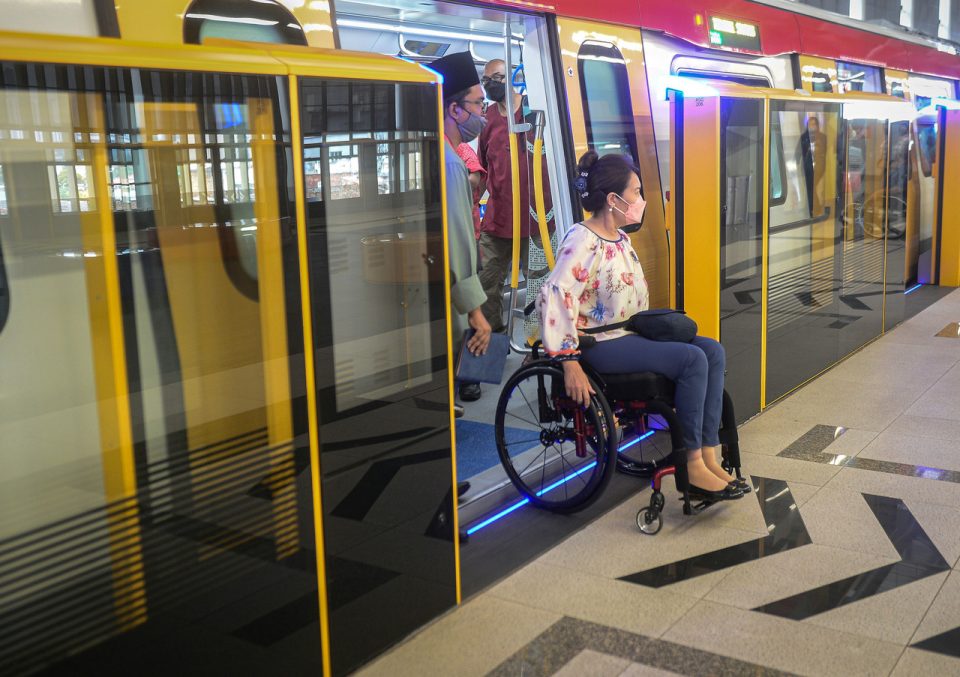KUALA LUMPUR, July 22 — The accessibility designs for all MRT Putrajaya line stations incorporate disabled-friendly features and enhancements, said MMC Gamuda KVMRT (PDP SSP) Sdn Bhd (MMC Gamuda).
In a statement today both MMC Gamuda, the turnkey contractor for MRT Putrajaya line and Mass Rapid Transit Corporation (MRTC), the owner of the MRT Putrajaya line project believe in accessibility to public transportation for all persons including the differently abled.
“And accordingly, station design and construction at every stage adopt inclusivity in the widest and truest sense,” the statement said.
MMC Gamuda said the design of all the MRT Putrajaya line stations including facilities for the disabled, are in full compliance with the Malaysian Standard for Universal Design and Accessibility in the Built Environment – Code of Practice, MS1184:2014 published by the Department of Standards, Malaysia.
“Going beyond just ensuring compliance with established standards however, MMC Gamuda and MRTC took additional efforts to consolidate feedback from experts in relevant government agencies and authorities,” said the statement.
The agencies and authorities include the Land Public Transport Agency (APAD), the Ministry of Transport (MOT), the Ministry of Women, Family and Community Development (KPWKM) as well as NGOs including the Malaysian Association for the Blind (MAB), with the objective of enhancing the standards compliance of our (Putrajaya line) station designs with up-to-date inputs from all parties concerned, the statement added.
MMC Gamuda said the feedback was compiled into a report on Universal Design for MRT Stations, as the primary design principles for disabled facilities with lifts or elevators as the safest route for disabled passengers to use as well as the application of tactile tiles to avoid confusing those who are visually impaired.
Accordingly, for all MRT stations, directional tactile tiles are only installed at ground level connecting the disabled and bus laybys to the station lifts and not to the escalators or stairs.
“Disabled persons with partial visual impairment can still choose to use escalators and stairs if they wish, and for this reason, warning tiles are installed at the top and bottom landings to indicate an approaching step or change in level,” said the statement.
It also said internally, at the concourse level, the application of tactile tiles is designed to guide the visually impaired in the most efficient path from the entrance, through to the wide ticket gate and the customer service office, then on to the platform level.
Directional tactile tiles are not provided to ancillary amenities like the toilets to minimise confusion, which corresponds directly with MS1184 that the widespread application of tactile tiles to all amenities would compromise the effectiveness of the specific directional cue being provided.
“Assistance to use the toilet should instead be sought at the customer service office when needed.
“We hope the explanation clarifies certain media statements made recently, voicing concerns regarding what was misunderstood to be gaps in the tactile tile pathways, when in fact they are designed to best provide the necessary visual cues to disabled commuters wishing to use MRT services,” the statement added.
— Bernama





